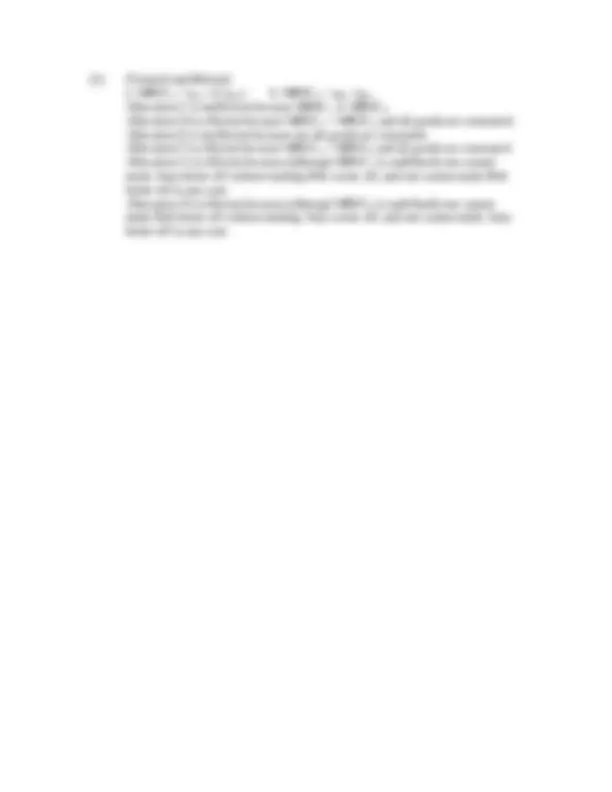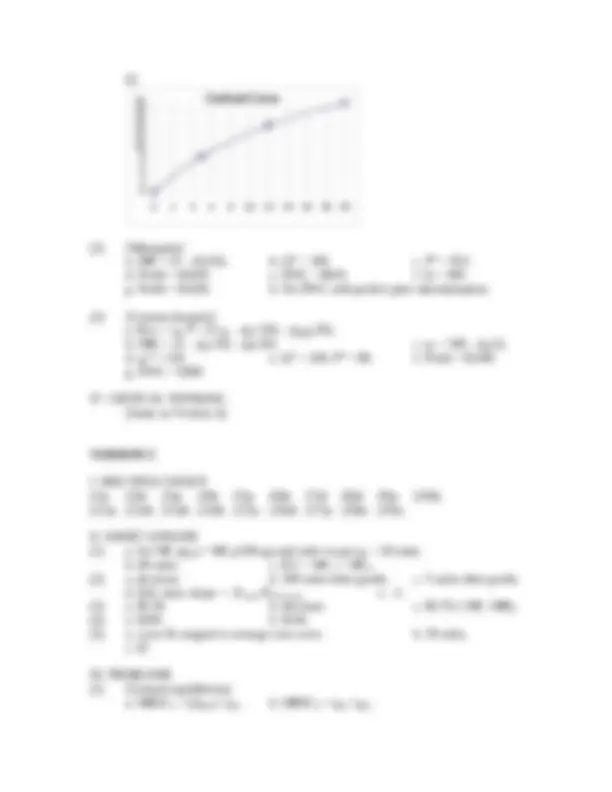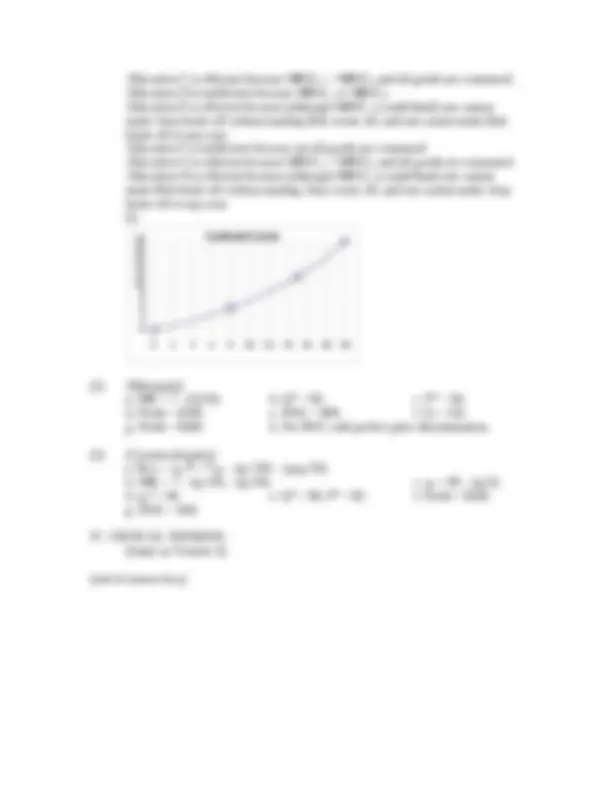





Study with the several resources on Docsity

Earn points by helping other students or get them with a premium plan


Prepare for your exams
Study with the several resources on Docsity

Earn points to download
Earn points by helping other students or get them with a premium plan
Community
Ask the community for help and clear up your study doubts
Discover the best universities in your country according to Docsity users
Free resources
Download our free guides on studying techniques, anxiety management strategies, and thesis advice from Docsity tutors
The answer key for midterm examination #4 in intermediate microeconomic analysis (econ 173) at drake university, fall 2008. The answer key includes multiple choice, short answer, and problem-solving questions related to various microeconomic concepts such as general equilibrium, monopoly, and cournot duopoly.
Typology: Exams
1 / 7

This page cannot be seen from the preview
Don't miss anything!




Intermediate Microeconomic Analysis (Econ 173) Drake University, Fall 2008 William M. Boal
(1)a. (2)e. (3)b. (4)b. (5)b. (6)d. (7)e. (8)e. (9)b. (10)b. (11)b. (12)b. (13)b. (14)c. (15)c. (16)a. (17)a. (18)e. (19)a. II. SHORT ANSWER (1) a. Set MCA(qA) = MCB(100-qB) and solve to get qA = 60 units. b. 40 units. c. $11 = MCA = MCB. (2) a. decrease. b. 180 units other goods. c. 3 units other goods. d. $6, since slope = –Penergy/Pother goods. e. –3. (3) a. $0.85. b. decrease. c. $0.15 (=MC–MR). (4) a. $360. b. $150. (5) a. curve B, tangent to average cost curve. b. 30 units. c. $6. III. PROBLEMS (1) [General equilibrium] a. MRSCA = q1A / (2 q2A). b. MRSCB = (2 q1B) / q2B. Allocation C is efficient because MRSCA = MRSCB and all goods are consumed. Allocation D is inefficient because not all goods are consumed. Allocation E is efficient because MRSCA = MRSCB and all goods are consumed. Allocation F is inefficient because MRSCA MRSCB. Allocation G is efficient because (although MRSCA is undefined) one cannot make Amy better off without making Bob worse off, and one cannot make Bob better off in any case. Allocation H is efficient because (although MRSCB is undefined) one cannot make Bob better off without making Amy worse off, and one cannot make Amy better off in any case. (i) Contract Curve 0 2 4 6 8 10 12 14 16 18 20 0 2 4 6 8 10 12 14 16 18 20
(2) [Monopoly] a. MR = 14 – (Q/10). b. Q* = 120. c. P* = $8. d. Profit = $720. e. DWL = $360. f. Q = 240. g. Profit = $1440. h. No DWL with perfect price discrimination. (3) [Cournot duopoly] a. Rev 1 = q 1 P = 14 q 1 – (q 12 /20) – (q 1 q 2 /20). b. MR 1 = 14 – (q 1 /10) – (q 2 /20). c. q 1 = 120 – (q 2 /2). d. q 1 * = 80. e. Q* = 160, P* = $6. f. Profit = $640. g. DWL = $160. IV. CRITICAL THINKING (1) Non-profit organizations may focus on the public good, but they still must minimize their losses. Thus they are motivated to use market-segmenting price discrimination to minimize losses. This means that they follow the same pricing rule as profit-making firms:
i
(^) , where i denotes the elasticity of demand by the ith market segment. So if students and senior citizens have greater elasticity of demand (that is, if they are more sensitive to the price) than other customers, then these organizations will give these groups discount prices. (2) If firms engage in price competition, then indeed the market price will be driven down to marginal cost. But if the firms set quantities instead of prices, as in a Cournot oligopoly , then price will not be driven down to marginal cost. Alternatively, if the firms' products are differentiated (imperfect substitutes in the eyes of consumers) and even if entry is free as in monopolistic competition , then price will not be driven down to marginal cost. VERSION B I. MULTIPLE CHOICE (1)e. (2)b. (3)a. (4)c. (5)d. (6)a. (7)b. (8)b. (9)d. (10)c. (11)c. (12)c. (13)b. (14)e. (15)d. (16)a. (17)a. (18)c. (19)c. II. SHORT ANSWER (1) a. Set MCA(qA) = MCB(100-qB) and solve to get qA = 70 units. b. 30 units. c. $12 = MCA = MCB. (2) a. decrease. b. 240 units other goods. c. 4 units other goods. d. $8, since slope = –Penergy/Pother goods. e. –4. (3) a. $1.40. b. increase. c. $0.40 (=MR–MC). (4) a. $240. b. $144. (5) a. curve C, tangent to average cost curve. b. 40 units. c. $8. III. PROBLEMS
(i) Contract Curve 0 2 4 6 8 10 12 14 16 18 20 0 2 4 6 8 10 12 14 16 18 20 (2) [Monopoly] a. MR = 21 – (Q/10). b. Q* = 180. c. P* = $12. d. Profit = $1620. e. DWL = $810. f. Q = 360. g. Profit = $3240. h. No DWL with perfect price discrimination. (3) [Cournot duopoly] a. Rev 1 = q 1 P = 21 q 1 – (q 12 /20) – (q 1 q 2 /20). b. MR 1 = 21 – (q 1 /10) – (q 2 /20). c. q 1 = 180 – (q 2 /2). d. q 1 * = 120. e. Q* = 240, P* = $9. f. Profit = $1440. g. DWL = $360. IV. CRITICAL THINKING (Same as Version A) VERSION C I. MULTIPLE CHOICE (1)e. (2)b. (3)a. (4)b. (5)a. (6)b. (7)d. (8)d. (9)a. (10)b. (11)a. (12)d. (13)d. (14)b. (15)c. (16)d. (17)a. (18)e. (19)c. II. SHORT ANSWER (1) a. Set MCA(qA) = MCB(100-qB) and solve to get qA = 20 units. b. 80 units. c. $11 = MCA = MCB. (2) a. decrease. b. 300 units other goods. c. 5 units other goods. d. $10, since slope = –Penergy/Pother goods. e. –5. (3) a. $0.30. b. decrease. c. $0.70 (=MC–MR). (4) a. $200. b. $140. (5) a. curve B, tangent to average cost curve. b. 50 units. c. $7. III. PROBLEMS (1) [General equilibrium] a. MRSCA = (2q1A) / q2A. b. MRSCB = q1B / q2B.
Allocation C is efficient because MRSCA = MRSCB and all goods are consumed. Allocation D is inefficient because MRSCA MRSCB. Allocation E is efficient because (although MRSCA is undefined) one cannot make Amy better off without making Bob worse off, and one cannot make Bob better off in any case. Allocation F is inefficient because not all goods are consumed. Allocation G is efficient because MRSCA = MRSCB and all goods are consumed. Allocation H is efficient because (although MRSCB is undefined) one cannot make Bob better off without making Amy worse off, and one cannot make Amy better off in any case. (i) Contract Curve 0 2 4 6 8 10 12 14 16 18 20 0 2 4 6 8 10 12 14 16 18 20 (2) [Monopoly] a. MR = 7 – (Q/10). b. Q* = 60. c. P* = $4. d. Profit = $180. e. DWL = $90. f. Q = 120. g. Profit = $360. h. No DWL with perfect price discrimination. (3) [Cournot duopoly] a. Rev 1 = q 1 P = 7 q 1 – (q 12 /20) – (q 1 q 2 /20). b. MR 1 = 7 – (q 1 /10) – (q 2 /20). c. q 1 = 60 – (q 2 /2). d. q 1 * = 40. e. Q* = 80, P* = $3. f. Profit = $160. g. DWL = $40. IV. CRITICAL THINKING (Same as Version A) [end of answer key]